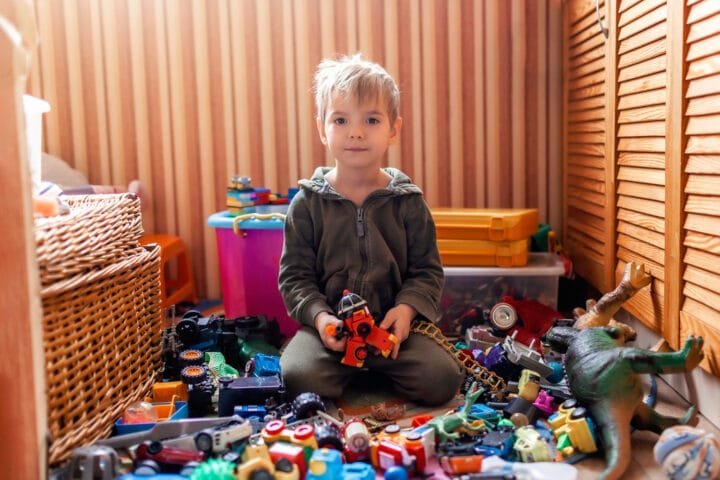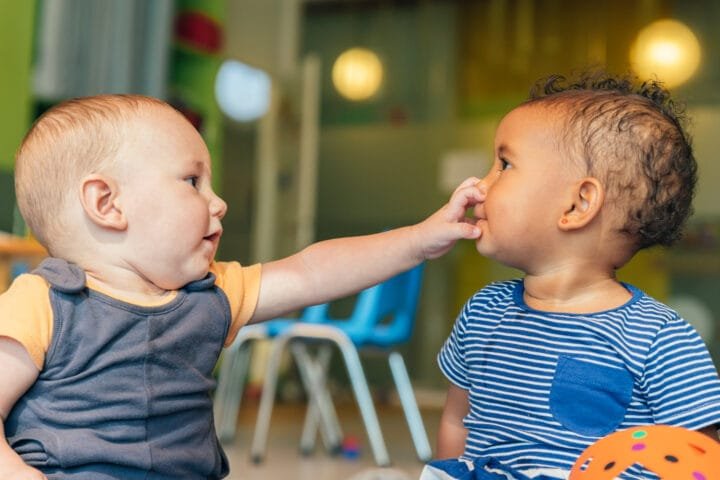Leaving Our Nest: How We Help Our Children Fly High in a New Home and School
Remember that feeling of dread in your stomach on the first day of school? Imagine that feeling amplified tenfold, coupled with the uncertainty of a completely new environment. Many children experience that when moving to another home and school. We’ve been there twice. It’s a whirlwind of emotions: excitement, fear, anxiety, and sadness. This could be a traumatic experience for our kids, but we can turn it into a positive one with the right tools and empathy.
Introduction: The Emotional Rollercoaster of Moving
Moving disrupts a child’s world. It’s like pulling a plant from its familiar soil and replanting it in a foreign land. Younger children might not fully grasp moving, while older kids and teens may struggle with leaving their friends and familiar routines. They might exhibit anxiety, fear, sadness, or even excitement, sometimes all at once!
Think of it like this: your child’s brain is a busy airport. When you announce a move, a sudden flight cancellation throws the entire system into chaos. Suddenly, there are delays, frantic passengers (emotions!), and rescheduling. Our role as parents is to be air traffic controllers, guiding our young passengers through this turbulence with patience and understanding.
Why This Guide Matters
We’ve been there, felt the stress, wiped away the tears, and celebrated the small victories. This guide is our way of sharing our wisdom and confidently guiding you through the moving process. Because moving with kids isn’t for the faint of heart, we’ll help you put together practical strategies to help your kids through the transition. This will create a positive transition experience.
Before the Move: Preparing Your Child for a New Beginning
When we moved across the country when she was five, I told Sophie we were heading on a grand adventure to a magical land filled with talking animals and ice cream trees. I instilled excitement in her, even though reality didn’t match my fantasy (sadly, there weren’t talking squirrels).
Open Communication: The Key To Navigating the Move
Honesty and age-appropriate explanations are essential. We found that involving our children in the conversation, rather than simply announcing the decision, made a difference.
- For younger children, keep it simple: “We’re moving to a new house, and you’ll have an extra room!”
- Older children can handle more details. For instance, you can explain the reasons for the move, whether for a better job, a larger house, or simply a change of scenery. You can also discuss the new school they will be attending, the potential opportunities in the new neighborhood, and how the move can be a chance for a fresh start. Encourage questions and address concerns honestly. “Will I still see my friends?” “What will my new school be like?” These are valid questions that deserve thoughtful answers.
- Manage expectations. Avoid painting an overly rosy picture. Acknowledge that while the change of place will be exciting, adjusting will also take time.
Involving Your Child in the Process
Children crave control, especially when faced with significant change. Giving them a sense of ownership in the moving process can significantly reduce their anxiety.
- Let them pack their favorite toys. This will give them a sense of responsibility and allow them to keep a piece of their old life close.
- Create a moving “to-do” list together. Checking off tasks as you go visually represents progress and helps them feel involved.
- Make a memory book. Gather photos, drawings, and mementos from your current home and create a scrapbook together. This tangible reminder of happy memories can comfort during transition.
Addressing Fears and Anxiety
Moving can trigger various emotions, from fear of the unknown to sadness about leaving friends behind. Validating these feelings is crucial.
- “It’s okay to feel disappointed about leaving your friends. It’s difficult to say goodbye.”
- Role-playing can help children practice coping mechanisms. “What would you say if someone asked about your old school?”
- Books and movies about moving can spark conversations and normalize feelings. “Remember that character in the book? They felt scared, too, but they made amazing new friends!”

During the Move: Navigating the Transition
You’ll see boxes piled high, furniture wrapped in blankets, and constant commotion. Your kids must maintain a sense of normalcy during this stressful time.
Maintaining Routine and structure
When we moved into that new house with creaky floorboards, we stuck to our usual bedtime routine: baths, stories, and cuddles. This helped Ethan settle quickly despite the unfamiliar surroundings.
- Routines should be as familiar as possible. Mealtimes, bedtimes, and even regular playtimes can provide stability.
- Unpack their room first. Creating a familiar and comfortable space amidst chaos can be grounding.
Remember self-care! You’re the Anchor in the Storm of Change
Saying Goodbye and Staying Connected
Goodbyes are tough, even for adults. Help your children say farewell meaningfully.
- Organize a farewell gathering with friends and neighbors. A casual get-together allows closure and reinforces the idea that friendships can endure despite distance.
- Plan future visits and exchange contact information. Knowing they can stay connected with their friends can ease separation pain.
Utilize technology. Video calls, messaging apps, and even letter writing can help maintain those connections. You can schedule regular video calls with their friends, encourage them to write letters or emails, and even plan virtual playdates or game nights to keep the bond strong.
Exploring the New Environment
Remember our first family bike ride in our newly constructed neighborhood? The excitement on the kids’ faces as they discovered hidden parks and quirky small shops was priceless.
- Explore your newly arrived surroundings together. Take walks, bike rides, and familiarize yourself with the neighborhood.
- Visit local parks, libraries, and community centers. These places offer opportunities to meet new people and engage in familiar activities.
- Research fun activities and attractions in your destination city or town. Plan day trips and outings to create positive experiences and excitement for your changed life.

After the Move: Setting In and Building Connections
The initial excitement of moving home can quickly fade as the reality of adjusting to an unfamiliar environment sets in. This is when your child needs your support the most.
Creating a Welcoming Home Environment
Remember how we let Sophie choose the paint color for her updated room? That small act of ownership made her feel like she was part of creating our new home.
- Personalize their brand-new space. Hang familiar pictures, display favorite toys, and create a unique space.
- Establish a designated play area or quiet corner. A space to relax and unwind is essential, especially during stressful times.
- Prioritize family time. Movie nights, game nights, or just sharing meals can strengthen bonds and create a sense of belonging.
Supporting Social Integration
Making new friends is often the biggest hurdle for children after a move. Encourage social interaction and provide opportunities to connect with others.
- Enroll them in extracurricular activities and clubs based on their interests. Shared activities provide common ground and a natural way to meet like-minded peers.
- Arrange playdates with classmates or neighbors. Sometimes, parental intervention can jumpstart those initial friendships.
- Volunteer in the community. Volunteering benefits others and exposes your child to new people and experiences.
Maintaining Open Communication and Patience
Adjusting to an unfamiliar home and school takes time. Be patient and understanding, and maintain open communication throughout the process.
- Check-in regularly about their feelings and experiences. “How was your day at school?” “Are you settled in yet?”
- Provide reassurance and support. “It’s normal to feel homesick. We all miss our old home sometimes.”
- Celebrate milestones and successes. Acknowledge their efforts and celebrate their achievements, no matter how small.

Special Considerations: Addressing Unique Needs
Every child is different, and their needs during a move will vary. Consider these particular circumstances:
Moving with Children with Special Needs
When we moved with our son, Ethan, who has autism, we learned that preparation is critical. Changes in Routine and environment can be particularly challenging for children with special needs.
- Prepare them well in advance. Use visual aids, social stories, and repetitive explanations to familiarize them with moving.
- Communicate with their new school and healthcare providers. Share relevant information about their needs and support systems to ensure a smooth transition.
- Seek support groups or resources specifically for families with special needs children. Connecting with others who understand your challenges can provide invaluable support and guidance.
Moving During Challenging Times (e.g., divorce, job loss)
Moving is stressful enough, but it can be even more overwhelming for children when coupled with other life challenges like divorce or job loss.
Acknowledge the added stress and emotions associated with the move. “This is a lot of change happening simultaneously, and it’s okay to feel confused or overwhelmed.”
- Provide extra reassurance and stability. Stick to routines as much as possible, offer extra cuddles, and create a safe space for them to express their feelings.
- Seek professional help if needed. A therapist or counselor can provide tools and support to navigate complex emotions and help your child develop healthy coping mechanisms.
Books to Pack in Your Moving Boxes (and Hearts)
Moving can shake up a child’s world. Familiar sights, sounds, and smells vanish, replaced by the unknown. Books can be a comforting bridge between the old and the new, offering solace, validation, and even giggles. Here are a few tales to tuck into your moving boxes (and your hearts):
- The Berenstain Bears’ Moving Day: Join Brother and Sister Bear as they grapple with the excitement and anxiety of moving to a new home. This classic story gently explores the challenges of packing, saying goodbye to friends, and adjusting to a new environment. It’s a reassuring reminder that family and love remain the same even in a new place.
- Alexander, Who’s Not (Do You Hear Me? I Mean It!) Going to Move: If you have a resistant mover, Alexander is your guy! This hilarious story captures the frustration and defiance that children might feel when faced with a move they didn’t choose. It’s a great way to validate their feelings and discuss their concerns.
- Goodbye House: Saying goodbye to a beloved home can be bittersweet. This tender story helps young children acknowledge their sadness while celebrating the happy memories made within those walls. It’s a gentle reminder that even though we leave places behind, the love and laughter we shared there stay with us always.
- A Kiss Goodbye (The Kissing Hand Series): Separation anxiety can be a significant hurdle during a move. This heartwarming story introduces the concept of a “Kissing Hand” – a simple ritual to help children feel connected to loved ones even when they’re apart. Whether for moving, starting school, or simply coping with goodbyes, this book offers a tangible tool for comfort and reassurance.
- The Moving Book: A Kids’ Survival Guide: Geared towards older elementary-aged children, this interactive book offers practical advice and coping strategies for navigating the moving process. From packing tips to making new friends, this guide empowers kids to participate in their transition and actively embrace the adventure ahead.
Beyond these specific titles, look for books that reflect your child’s interests and personality. Do they love animals? Find a story about a pet adjusting to a new home. Are they fascinated by maps and geography? Explore books about different cultures and places.
Books can be a powerful tool for connection, comfort, and understanding during a move. So snuggle up with your little ones, share thes
Summary: Embracing the Adventure of Moving
A move doesn’t have to be boring. It can be exciting, a chance to grow and make new memories. Remember the key lime pie we discovered at that quirky diner? It became a family favorite!
It’s easy to move successfully if you’re careful, open, and patient. Listen to your child’s concerns, validate their feelings, and celebrate their triumphs. Make sure you prioritize their emotional well-being. You love and support them, even when things change.
FAQs
That’s real! Pre-move jitters are real. But here’s the thing: kids thrive on honesty and involvement.
Talk it out: Let them know why you’re moving. What can they expect? Answer their questions patiently, even if it’s the tenth time they’ve asked.
Make it an adventure: Get them excited! Look at pictures of the new house, explore the neighborhood online, or even plan a fun road trip to the new town.
Give them a job: Kids love to feel helpful. Let them pack their favorite toys, decorate moving boxes, or even help plan farewell parties.
It’s heartbreaking. Saying goodbye is challenging, even for us grown-ups. Here’s how we handled it:
It would help if you didn’t dismiss their sadness. Say, “It’s hard to leave your friends, so we understand if you’re sad.”
Be sure to keep those connections alive: Have a special goodbye party, exchange contacts, and discuss how to stay in touch—video calls, letters, even good old phone calls!
Focus on the future: Talk about making new friends in the new neighborhood and all the fun things they can do together.
Every child is different, but here are some red flags we noticed:
Changes in behavior: More clingy, irritable, withdrawn, or having trouble sleeping? These can be signs of stress.
Having trouble in school: A sudden drop in grades or lack of interest can mean they’re struggling.
Having stomachaches, headaches, or a change in appetite can sometimes signify emotional distress.
Feel free to talk to your child’s teacher or school counselor. They can offer support and guidance.
Here’s what we did!
Please ensure they’re involved: Sign them up for sports, dance, art classes, or whatever they like.
Meet other families in your neighborhood: Visit local parks, libraries, and community centers.
Be the “open door” house: Invite classmates for playdates or host a casual get-together for neighborhood kids.
No right or wrong answer. It depends on your kid’s age, temperament, and how much support they get. Some kids recover quickly; some don’t.
Mama, stay patient, offer lots of love and reassurance, celebrate the small victories, and don’t be afraid to seek professional help if needed.
Related Posts















































































